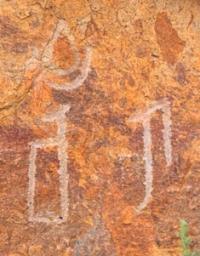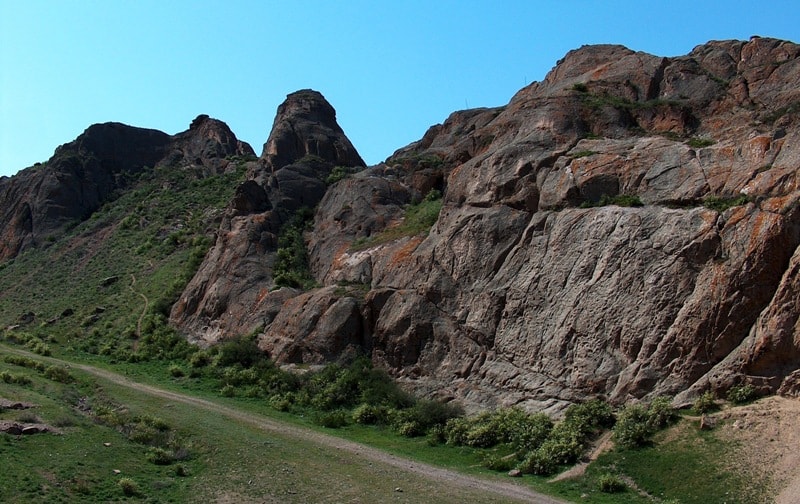You are here
Tamgaly-Tas Buddhist inscriptions.

Petroglyphs of a sight of Kazakhstan.
«Memory is the treasure house of the mind wherein the monuments thereof are kept and preserved»
Thomas Fuller.
Trip from town Kapshagay on petroglyphs of Tamgaly-Tas.
"The Written Rocks on the Ili River (26 km below the Kapshagai Hydroelectric Power Station dam) contain petroglyphs, describing Buddha, which correspond to similar Budhist images from northern India.
The drawings hearken to a peaceful culture, which settled the Semirechye territory, along the northern route of the Great Silk Road, where peace was security were required for the peoples of Asia and Europe to trade.
Household animals and inscriptions are also found in the ancient Tibetan and Kalmyk languages. Just a short journey from Kapchagai, on the bank of the Ili, is a place that will transport you far back in time. In the early Middle Ages there was a ford across the Ili at its narrowest point - the Kapchagai Gorge, at Tamgaly-tas.
For centuries, an image of Buddha has gazed into the sky from an enormous rock on the right bank. This is Tamgaly-tas, 20 km downstream from the reservoir and 120 km from Almaty. The sun-blackened cliff-faces have preserved many petroglyphs (rock paintings), images of mysterious deities and late Buddhist inscriptions whose meaning has to be unravelled.
There are about a thousand different rock drawings ranging from deer-hunters to the Buddha. The Sanskrit text under the drawings reads "Om mane padme hum", meaning "A snow-white pearl in the lotus flower" or, in another translation, "Blessed be the one born from the lotus".
These inscriptions and drawings date back to the XII century. Nearby is another rock with writings in an ancient Turkic runic script dating back to the VIII - IX centuries. These were presumably left by Kypchak tribes, although scholars have yet to prove this.
The Tamgaly-Tas altar is not the only relic of Kazakhstan's Buddhist past: Buddhism was widespread throughout southern Kazakhstan in medieval times. These rocks, the highest in the lli Valley, are known not only for their attraction to climbers, but also for their rock carvings, the most mysterious among which are several Buddha images.
It is assumed that the large Buddha figures and the Sanskrit inscriptions carved in the polished rock date from the Kith Century. At the time, there are said to have been Buddhist monasteries in the east of Kazakhstan, which were later dismantled by the Zhungars.
The pagan inhabitants of the steppe would doubtless have added the Buddhas to their animist pantheon without any problem.

Authority:
The guidebook across Kazakhstan . Authors Dagmar Schreiber and Jeremy Tredinnick. Publishing house "Odyssey".2010.
Photos
Alexander Petrov.







